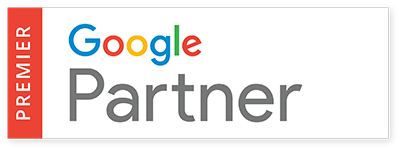How Local Pharmacies Can Leverage Google My Business
Digital marketing for pharmacies is challenging because you cannot advertise prescription medicines directly. However, Google My Business (GMB) provides a safe and effective way to increase visibility in your local community. Optimizing your GMB profile allows patients to find your pharmacy quickly and easily, view hours, access services, and engage with your content.
To maximize GMB effectiveness, follow these steps:
- Claim or create your GMB listing, ensuring Name, Address, Phone (NAP) consistency.
- Fill out all business details including hours, website, and services.
- Add high-quality photos and videos of your store, products, and team.
- Encourage patients to leave reviews, and respond promptly to build trust.
- Post regular updates about promotions, seasonal campaigns, or health tips.
- Use keywords relevant to your city and services to improve local SEO.
Advanced tips:
- Include FAQs on your GMB listing addressing common questions about non-prescription products.
- Track insights to see which queries bring visitors to your profile and adjust content accordingly.
- Use GMB posts to highlight community engagement, such as vaccination drives or wellness workshops.
Boost Local SEO
Local SEO ensures your pharmacy appears in search results when patients in your area look for pharmacies online. Google considers three main factors: prominence, relevance, and distance. Optimizing for local SEO enhances your chances of appearing at the top of search results.
- Ensure your NAP is consistent across all online directories.
- Use location-specific keywords in your website content and GMB description.
- Encourage patient reviews to increase credibility and engagement.
- Maintain a mobile-friendly, fast-loading website for better rankings.
- Create localized blog content addressing health concerns relevant to your community.
Use Educational Content to Engage Patients
Content marketing helps pharmacies build authority and trust online. Creating valuable, educational content ensures patients view your pharmacy as a knowledgeable healthcare resource.
- Write detailed blog posts about chronic disease management, seasonal health tips, medication guides, and wellness advice.
- Develop short video tutorials explaining proper medication use or healthy lifestyle tips.
- Include infographics or interactive tools such as symptom checkers or health quizzes.
- Repurpose blog content into social media posts, newsletters, or email campaigns to extend reach.
Tips:
- Regularly update content to maintain relevance and SEO value.
- Encourage patient interaction through comments, shares, and email signups.
- Use analytics to track which topics generate the most engagement.
Leverage Video & Social Media Content
Video content allows pharmacies to educate, engage, and build trust quickly. Patients respond well to visual explanations of complex health information.
- Produce short, concise “how-to” videos for medication usage or wellness tips.
- Repurpose blog posts into video snippets suitable for Instagram, Facebook, and YouTube.
- Host live Q&A sessions or webinars addressing community health questions.
- Track engagement and adjust content based on views, shares, and feedback.
Segmented & Automated Emails
Email marketing remains one of the most effective tools for pharmacies. Segmenting and automating your campaigns increases open rates, conversions, and patient loyalty.
- Segment emails based on patient demographics, purchase history, or chronic conditions.
- Automate refill reminders, health tips, appointment confirmations, and birthday greetings.
- Perform A/B testing on subject lines, content layout, and call-to-actions for higher engagement.
- Analyze open rates, click-through rates, and conversions to optimize campaigns.
WhatsApp Automation
WhatsApp allows pharmacies to receive prescriptions, communicate, and confirm orders instantly, improving efficiency and customer satisfaction.
- Patients can send prescriptions and addresses via WhatsApp.
- Share updated product catalogs and notifications quickly.
- Automate reminders for refills, appointments, and promotions.
- Respond to patient inquiries without increasing staff workload.
Paid Digital Advertising
Paid digital ads complement organic marketing strategies, allowing pharmacies to reach local patients actively searching for services.
- Google Ads: target local search terms like “pharmacy near me” or “medicine delivery [City].”
- Facebook/Instagram Ads: reach local demographics and promote ancillary products.
- Dynamic Search Ads: automatically match your website content to user queries.
- Retargeting Ads: target previous visitors to increase conversion rates.
Boost Patient Engagement Online
Building meaningful engagement online encourages trust, loyalty, and repeat visits.
- Educational content: blogs, videos, and infographics addressing common health topics.
- Email newsletters: include health tips, seasonal advice, and refill reminders.
- Virtual events: host webinars or live Q&A sessions to educate your community.
- Online reviews: encourage feedback and respond promptly.
- Interactive social media: polls, quizzes, and engagement posts.
Digital Tools Every Pharmacy Should Use in 2025
Digital tools improve workflow, marketing, and patient satisfaction. Key tools include:
- CRM systems to track patient interactions, automate reminders, and segment campaigns.
- Appointment and prescription apps for online bookings and prescription uploads.
- Analytics platforms to track website traffic, social engagement, and ROI.
- Automation tools like WhatsApp, email marketing, and dynamic search ads.
Social Media Strategies for Local Pharmacies
Social media helps educate patients and build trust. Focus on value, not direct product sales.
- Share educational content on health, wellness, and preventive care.
- Myth-busting content to clarify common misconceptions.
- Promote community events and initiatives.
- Interactive posts: polls, quizzes, and live Q&A sessions.
- Promote ancillary products like wellness items and skincare.
Tip: Consistency and value-driven content keeps patients engaged and loyal.

